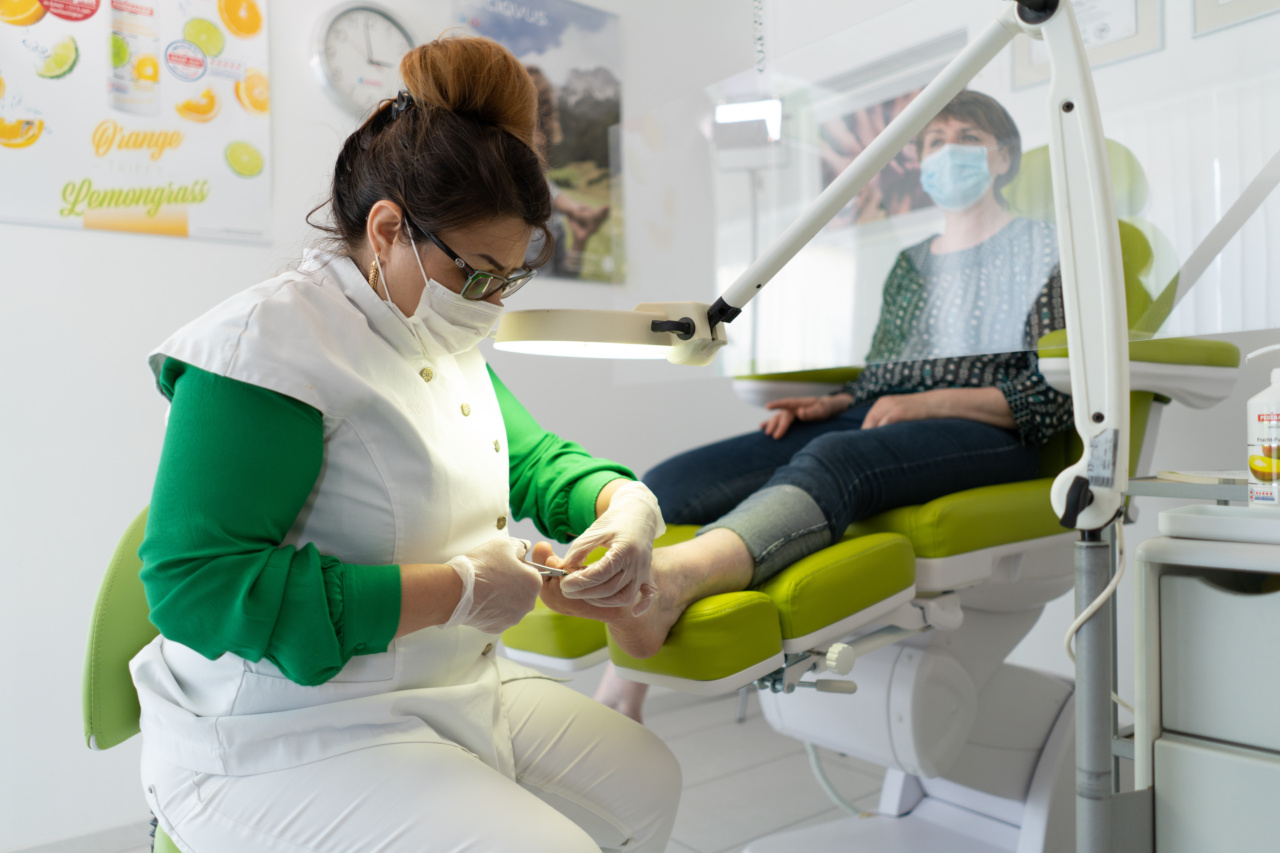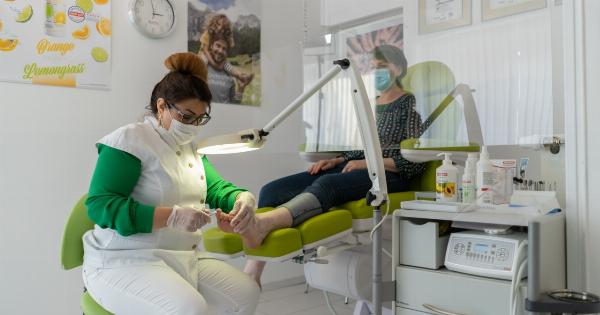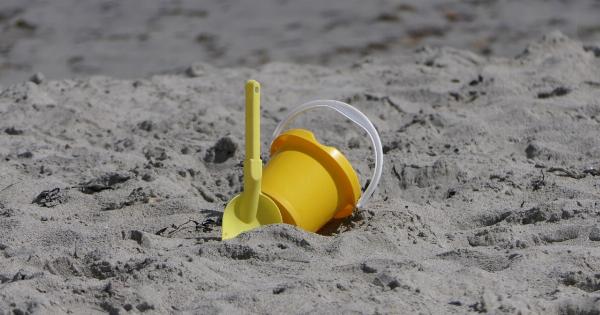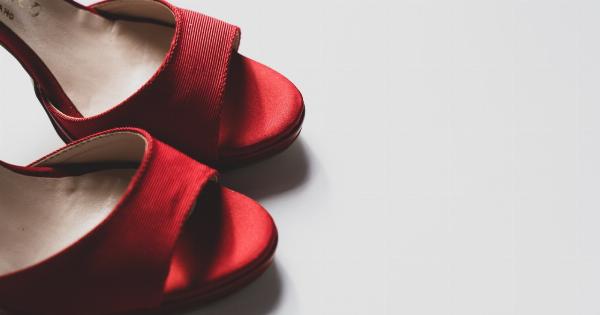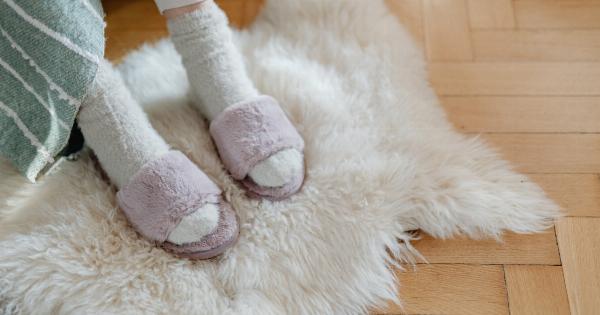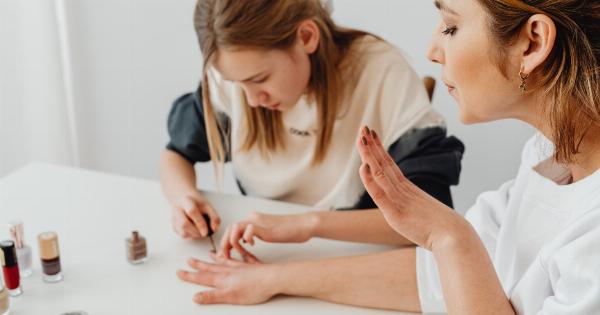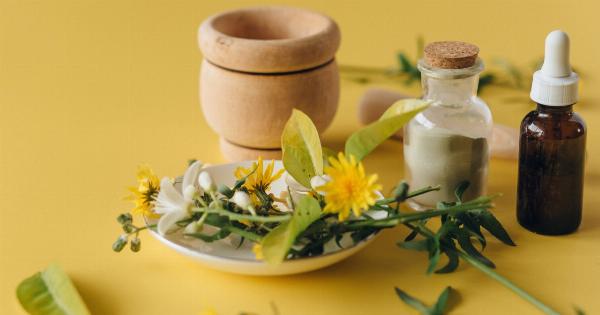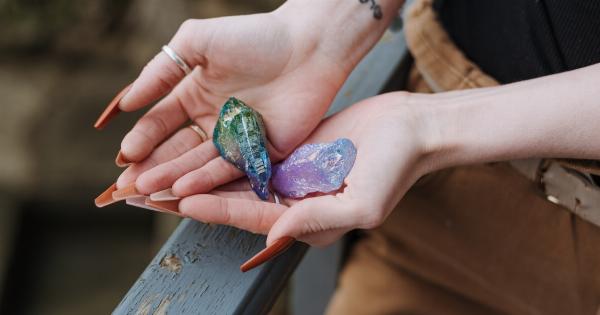Having a regular pedicure is not only a great way to keep your feet looking and feeling fabulous, but it also plays a vital role in maintaining good foot hygiene.
However, if you’re not careful, a simple visit to the nail salon can lead to a fungal infection. Fungal infections can be stubborn to treat and often cause discomfort and embarrassment. To protect your feet during your pedicure sessions, here are some essential tips to follow:.
1. Choose a Reputable Nail Salon
When it comes to protecting your feet and ensuring a safe pedicure experience, selecting a reputable nail salon is crucial.
Look for salons that prioritize cleanliness and sanitation, which includes using sterilized tools and proper disinfection protocols. Before your appointment, read reviews, ask for recommendations, and visit the salon to assess their cleanliness standards.
2. Bring Your Pedicure Tools
If you’re concerned about the cleanliness of pedicure tools used at salons, consider investing in your own set of pedicure tools. This way, you can ensure that the tools are properly sterilized and only used on your feet.
Your personal pedicure kit should include nail clippers, cuticle pushers, pumice stones, and nail files. Remember to clean and sanitize your tools after each use.
3. Skip the Whirlpool Foot Baths
Whirlpool foot baths may seem like a relaxing treat, but they can be a breeding ground for fungal infections. The warm, moist environment created by the whirlpool is the perfect habitat for fungi to thrive.
Instead, opt for a basin or bowl filled with warm water and a few drops of antiseptic solution. This will help kill any bacteria or fungi present on your feet.
4. Be Cautious of Nail Polish
Nail polish can help enhance the appearance of your toes, but it can also trap moisture and create a suitable environment for fungal growth. When applying nail polish, make sure to leave a few days in between coats to allow your nails to breathe.
Additionally, avoid using nail polishes that contain harsh chemicals, as these can damage your nails and make them more susceptible to infections.
5. Opt for Proper Footwear
The type of footwear you choose can affect the health of your feet, especially when it comes to fungal infections. Shoes that are tight and don’t allow for adequate ventilation can create a warm, damp environment that fungi love.
Opt for shoes made of breathable materials such as leather or mesh, as they allow air circulation around your toes. Additionally, make sure your shoes fit properly and aren’t too tight or too loose.
6. Practice Good Foot Hygiene
Keeping your feet clean and dry is essential for preventing fungal infections. After a pedicure, thoroughly dry your feet, paying close attention to the areas between your toes.
Moisturize your feet with a foot cream, but avoid applying it between your toes, as it can create a moist environment that promotes fungal growth. Also, change your socks daily and choose breathable materials such as cotton or moisture-wicking fabrics.
7. Watch for Early Signs of Infection
Being proactive and keeping an eye out for early signs of a fungal infection is crucial for prompt treatment. If you notice any redness, itchiness, peeling skin, or changes in nail color or texture, seek medical attention immediately.
The earlier you address the infection, the easier it will be to treat.
8. Treat and Prevent Athlete’s Foot
Athlete’s foot is a common fungal infection that affects the skin between the toes. To treat and prevent this condition, consider using over-the-counter antifungal creams or powders.
Apply them as directed and continue the treatment for at least a week after the symptoms disappear to ensure that the infection is completely eradicated. Additionally, avoid walking barefoot in public places like locker rooms or swimming pools.
9. Maintain Regular Foot Exfoliation
Regular foot exfoliation helps remove dead skin cells and prevents the build-up of fungal spores. After a warm foot soak, use a pumice stone or foot scrub to gently exfoliate your feet and heels, paying close attention to rough areas.
Avoid being too rough or aggressive, as this can cause small cracks in the skin, which can make your feet more susceptible to infections.
10. Consult a Podiatrist if Needed
If you frequently experience fungal infections or have specific concerns about your feet, it’s best to consult a podiatrist.
A podiatrist specializes in foot health and can provide guidance, diagnose any underlying conditions, and recommend appropriate treatment options.
